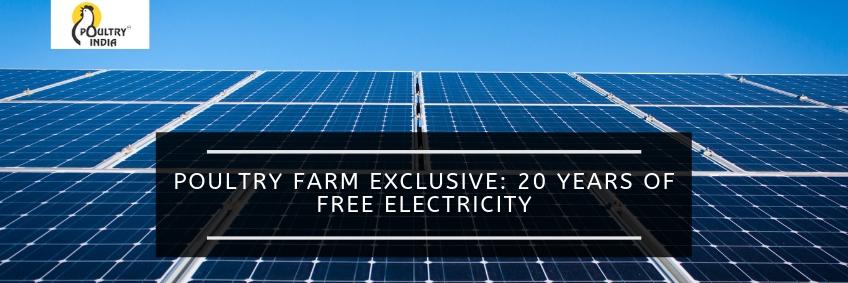Poultry Farm Exclusive: 20 Years of Free Electricity

About 3% of your total expenses come from energy use (this includes everything, even employees).
Suppose you have a 5% profit annual margin. If you could cut your energy costs from 3% down to 1%, your net profits go up to 7% — a 40% increase. Again, while these numbers are just speculative, you know your real ones. Cutting a big chunk from your energy costs will result in easy profit increases over time withouthaving to raise your prices.
Take a look at one Georgia poultry farmer’s numbers, and then consider your own long-term energy costs.
This farmer has a 6-house poultry farm, and he was looking at his unpredictable and ever-increasing Georgia Power utility bills, now reaching about $13,500 per year. Because of his deal with Tyson and other chicken processors, gas and electricity are his only major expenses, so any savings he can find will have a huge impact on long-term profits.
With energy costs biting bigger chunks from his bottom line every year, he decided to take advantage of current tax credits and other incentives for solar energy panels. the poultry farmer learned three more reasons to go solar:
- He has long, flat roofs – the ideal architecture for solar panels
- No loss of ground space – because of the long roofs, all his panels will fit on his roofs
- Southern exposure – south-facing roofs get the most direct sunlight in the Northern Hemisphere
65% Energy Savings – Minimum
With his new solar panels now fully operational, he’s expecting a minimum of 65% savings on his energy bills, but it could go as high as 75% depending on various factors. There are a lot of variables that affect solar energy efficiency, so it’s never an exact prediction.65% savings translates to a minimum energy-bill slashing of $8775 saved per year. With these savings and the tax incentives, he will recoup his costs for his new solar energy system within 5 years. Because it’s warranteed to produce energy for at least 25 years, he will be earning free electricity for at least 20 years.
Since his other expenses remain more or less constant, all these savings turn into profits. With no effort at all – no marketing, no expansion, no remodeling, and no other energy saving investments he could have made – he’ll be pocketing nearly $10,000 in extra profits per year.
And regardless of how you feel about it politically, if a carbon tax ever gets enacted, farms with solar energy will reap even more savings.
How Much Will Your Poultry Farm Save?
You can see some of the factors in play just from this one example. Consider your own poultry houses for a moment:- Which way do the roofs face?
- How much roof square footage is available?
- What are your utility costs per year?
Solar technology continues to improve, and the costs continue to decline. Back in 1977, solar power cost $76.67 per watt. By 2014, it was just 36 cents! Instead of decades before your system pays for itself, it’s only years – how many depends on various factors about your location and structure.
In other words, this summer, the temperature won’t be the only thing that’s hot in Georgia. The solar energy market is hot too, and now is the time to make a long-term investment in your poultry farm’s energy future.









.jpg)



